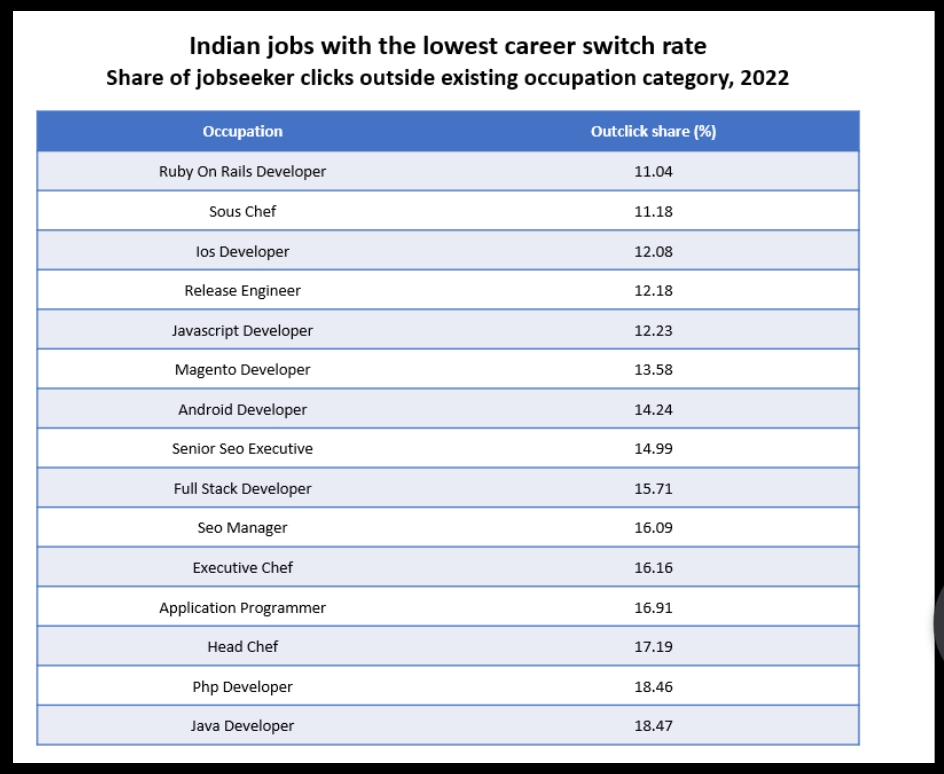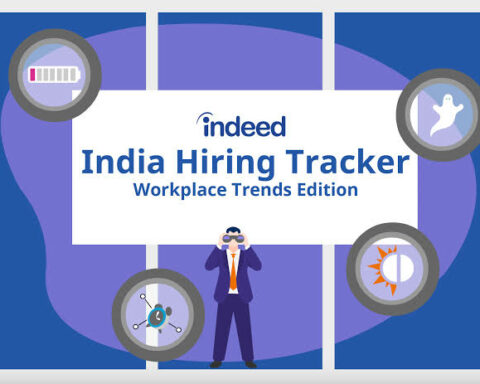Tech workers & chefs dominate list of workers in India who are least likely to seek a career change
Indeed, the world’s #1 job site has released new data highlighting the job roles that Indian workers are least likely to leave. The analysis reveals that workers in the technology and food industry sectors demonstrate remarkable career loyalty.
Career changes are common among professionals, driven by various factors such as higher pay, flexibility, career advancement, or less positive circumstances like burnout or redundancy. However, certain jobs inspire greater loyalty or prove more difficult to leave. Indeed’s analysis of resume data provides valuable insights into the career preferences of Indian professionals, shedding light on sectors and job roles that foster loyalty, as well as the aspirations of those seeking career changes.
The tech sector leads in jobs people don’t want to leave
Indeed’s data shows that the technology sector stands out as the most loyal, with the lowest share of outclicks by jobseekers at 38% (clicks on jobs outside their current sector). Technology professionals in India exhibit a strong inclination to remain in their current roles, likely due to the competitive salaries and benefits associated with these positions.
While the technology sector as a whole showcases remarkable loyalty, specific job roles within the sector exhibit varying levels of resistance to career switches. The top job roles with the lowest outclick rates include Ruby on Rails Developer (11.04%), iOS Developer (12.08%), Release Engineer (12.19%), and JavaScript Developer (12.23%).
Interestingly, job roles in the food industry also feature prominently among those that professionals are least likely to leave. Positions such as sous chef (11.18%), executive chef (16.16%), and head chef (17.19%) appear in the top fifteen job roles with high retention rates.
Alongside the tech sector, several other industries also exhibit high levels of career switch resistance. The healthcare sector, particularly in nursing (40.58%) witnesses professionals displaying remarkable loyalty to their chosen path. Human resources (45.93%), architecture (49.07%), and media (49.27%) are additional sectors where professionals demonstrate a significant degree of contentment and dedication to their roles.
Saumitra Chand, Career Expert, Indeed India said, “The attractiveness of different occupations likely reflects varying combinations of pay, flexibility and barriers to entry. The ‘stickiest’ jobs tend to be specialised ones where workers have made a considerable investment gaining specific skills and experience.

Conversely, some job roles don’t see much loyalty. These include roles like call center team lead, airport executive, applicator, funeral director which have more than 99% share of outclicks. These roles are often characterized by relatively low pay and less favorable working conditions, explaining their lower retention rates.
Where do career switchers want to go?
Professionals considering a career switch find roles in healthcare, technology, and the food industry particularly attractive. Among the top fifteen job titles with the highest interest from workers in other occupational categories are healthcare roles such as senior staff nurse, physiotherapist, x-ray technician, and senior optometrist.
In today’s tight labour market where skill and talent shortages are common, both attraction and retention of staff are key.
“Job switching rates vary considerably across occupations, with certain roles presenting greater challenges than others. Those looking to boost retention need to be mindful of the sectors they are more likely to lose staff to, and consider what they can do to better meet the needs of their workforce,” added Saumitra.
Methodology:
Jobseekers are allocated an occupational category based on the last job title in the CV they have uploaded on Indeed India. Jobseeker clicks are designated as an occupation outclick if they are on job titles in a different category from the last job on their CV. For example, if a Nurse clicks on a posting for warehouse workers then that would be considered an outclick. However, if that same HGV driver clicks on a posting for a dumper driver then that isn’t an outclick. An inclick, by comparison, refers to clicks into an occupation from a jobseeker whose current job sits in a different occupational category. For example, clicks on jobs in the food preparation category can come from jobseekers from a range of different occupational groups.








